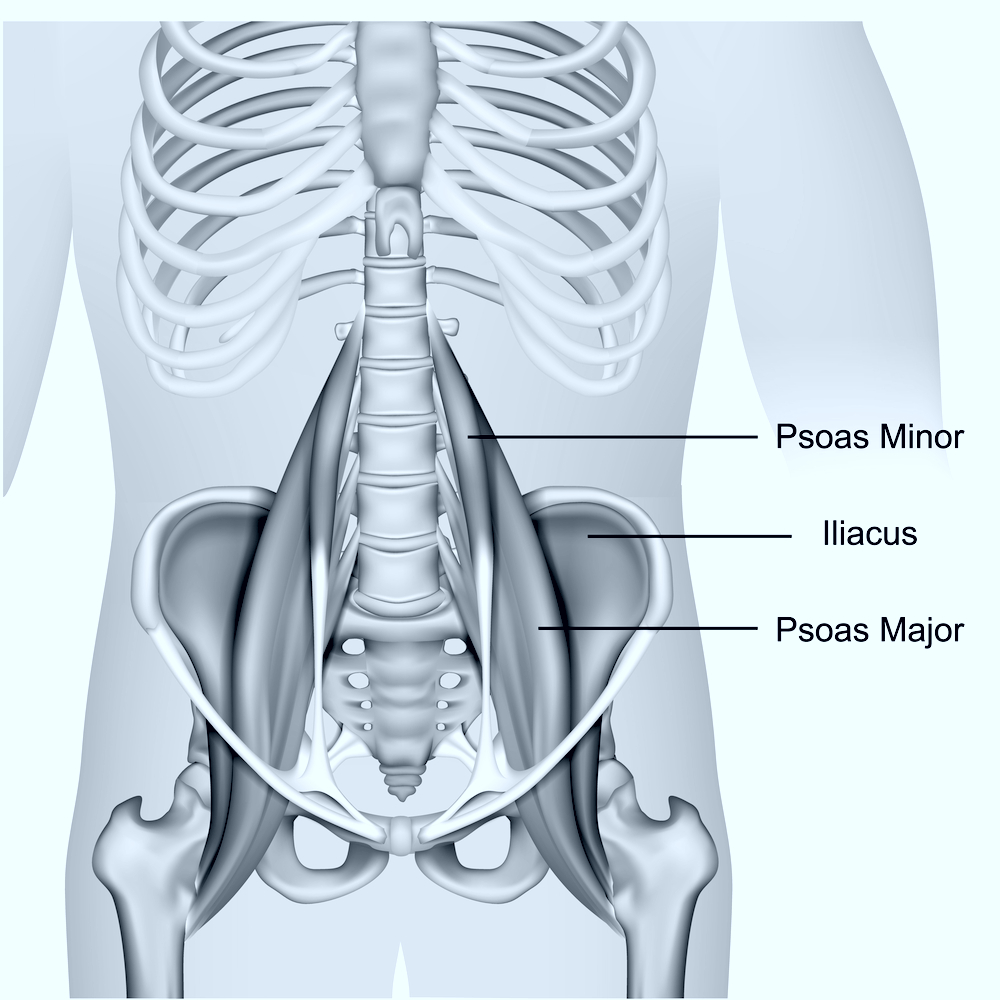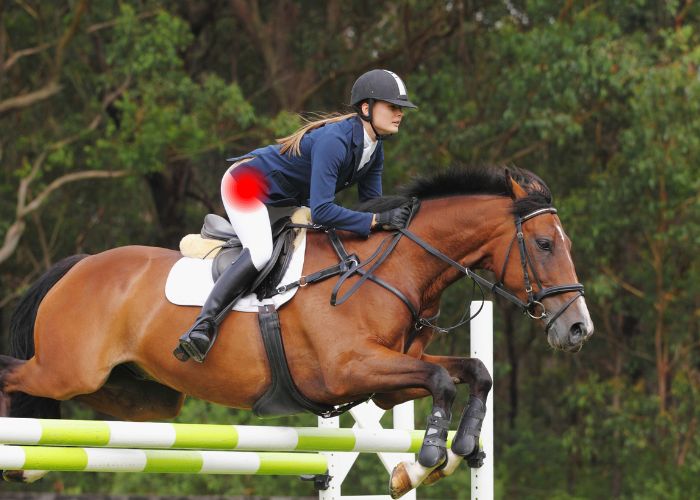What is the psoas muscle?
The psoas muscle, classified as a hip flexor, is one the biggest and strongest muscles in the body. This muscle originates on the lumbar spine, travels across the torso, and attaches to the lesser trochanter of the femur, a bony prominence on the inner thigh bone. The primary responsibility of the psoas muscle is hip flexion, but it also contributes to posture and spine stabilization. Damage or injury to the psoas muscle can result in low back and pelvic pain.
What is the iliopsoas muscle?
The iliacus muscle originates on the inner bowl of the pelvis (ilium) where it is joined by the psoas muscle. These muscles are connected to the lesser trochanter of the femur by the iliopsoas tendon. Because the iliacus and psoas muscles work collectively to perform the same movement, they are often referred to as the iliopsoas muscle.

What is psoas impingement?
The head of the femur (ball) and the acetabulum of the pelvis (socket) form the ball-and-socket arrangement of the hip joint. A painful hip condition, known as femoroacetabular impingement (FAI), can develop if the femoral head is not structurally or anatomically sound within the acetabular socket. This abnormality can lead to psoas impingement which is characterized by the tightening of the iliopsoas tendon and psoas muscle or a pinching sensation of the psoas muscle and surrounding soft tissues. Psoas impingement can develop on its own or be a consequence of underlying FAI. Even though athletes, particularly those in sports with repetitive use of the hip flexor muscles, have the highest likelihood of developing psoas impingement, non-athletic individuals that sit for extended periods of time can also be affected. Dr. Ronak Mukesh Patel, orthopedic hip specialist serving patients in Sugar Land, Pearland, and the Houston, Texas area, has the knowledge and understanding as well as substantial experience in treating patients who have experienced psoas impingement.
What are the symptoms of psoas impingement?
Hip pain and tenderness deep within the groin area are most often reported by individuals with psoas impingement. Other common symptoms of psoas impingement can include:
- Painful extension and flexion of the hip
- Hip tightness
- A “snapping” sensation along the anterior (front) hip
How is psoas impingement diagnosed?
A comprehensive medical history, including any prior hip injuries or other hip conditions, will be obtained through an interview with Dr. Patel. This will be followed by a thorough physical examination assessing the flexibility and strength of the psoas muscle and iliopsoas tendon. Diagnostic imaging studies, such as x-rays and magnetic resonance imaging (MRI), are useful for identifying any bone-related injuries or damage to the soft tissue structures of the hip joint.
What is the treatment for psoas impingement?
Non-surgical treatment:
Non-surgical therapies are often all that is needed to manage psoas impingement symptoms. Limiting or avoiding the activities that worsen any symptoms is strongly encouraged. Ice application and non-steroidal anti-inflammatory medications (NSAIDs) are also recommended. If the pain or inflammation persists with oral medications, a local anesthetic or corticosteroid injection can be administered directly into the hip joint. Participation in a physical therapy program focused on gradual muscle strengthening typically provides the most favorable outcome.
Surgical treatment:
However, surgical intervention may be necessary when non-surgical therapies fail to alleviate the symptoms associated with psoas impingement. Dr. Patel favors the minimally invasive arthroscopic surgical approach involving a small camera (arthroscope) and specialized surgical instruments for treating psoas impingement. Fractional lengthening of the iliopsoas tendon is performed to relieve any muscle or tendon tightness while also protecting hip flexion strength and muscle power. Any other irregularities documented, such as bone spurs or femoroacetabular impingement (FAI), can also be addressed at this time.
Psoas Impingement Specialist

Gymnasts, dancers, and track and field athletes can over-use a tendon in their hip called the iliopsoas tendon. Overuse of the iliopsoas tendon may cause tightness of the psoas muscle. This tightening or pinching of the muscle due to the abnormal motion of the hip is caused by the head of the femur, rubbing incorrectly against the socket of the hip which can lead to inflammation and psoas impingement. Orthopedic hip specialist, Doctor Ronak Mukesh Patel, provides diagnosis as well as surgical and nonsurgical treatment options for patients in Houston, Sugar Land, and Pearland, TX who have developed psoas impingement. Contact Dr. Patel’s team today!








